
Bronze is an alloy consisting primarily of copper, commonly with about 12–12.5% tin and often with the addition of other metals and sometimes non-metals, such as phosphorus, or metalloids such as arsenic or silicon. These additions produce a range of alloys that may be harder than copper alone, or have other useful properties, such as strength, ductility, or machinability.
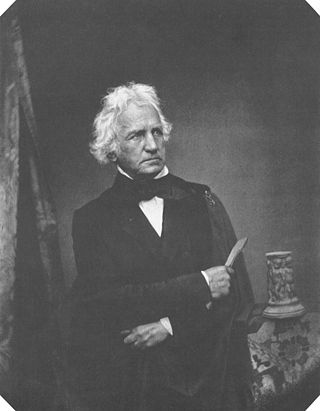
Christian Daniel Rauch was a German sculptor. He founded the Berlin school of sculpture, and was the foremost German sculptor of the 19th century.
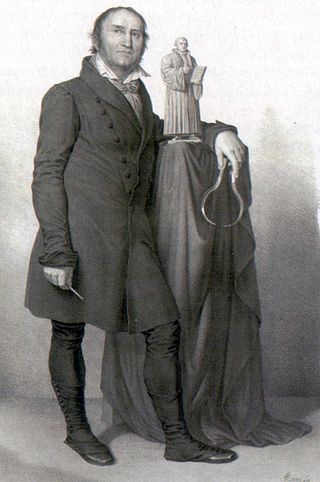
Johann Gottfried Schadow was a German Prussian sculptor.
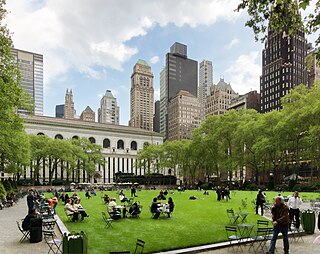
Bryant Park is a 9.6-acre (39,000 m2) public park located in the New York City borough of Manhattan. Privately managed, it is located between Fifth Avenue and Avenue of the Americas and between 40th and 42nd Streets in Midtown Manhattan. The eastern half of Bryant Park is occupied by the Main Branch of the New York Public Library. The western half, which contains a lawn, shaded walkways, and amenities such as a carousel, is located entirely over an underground structure that houses the library's stacks. The park hosts several events, including a seasonal "Winter Village" with an ice rink and shops during the winter.

Johanna Christiana Sophie Vulpius von Goethe was the longtime lover and later wife of Johann Wolfgang von Goethe.

Johann Wolfgang von Goethe was a German polymath and writer, who is widely regarded as the greatest and most influential writer in the German language. His work has had a profound and wide-ranging influence on Western literary, political, and philosophical thought from the late 18th century to the present day. Goethe was a German poet, playwright, novelist, scientist, statesman, theatre director, and critic. His works include plays, poetry and aesthetic criticism, as well as treatises on botany, anatomy, and color.
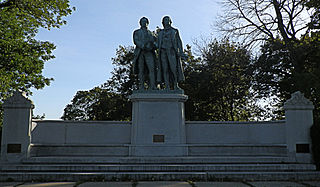
The Goethe–Schiller Monument is a public artwork by German artist Ernst Friedrich August Rietschel located in Washington Park, which is in Milwaukee, Wisconsin, United States. The bronze sculpture from 1908 depicts two men, Johann Wolfgang von Goethe and Friedrich von Schiller, one holding a laurel wreath and the other a scroll. The 12 foot artwork rests upon a 26 foot long granite base. The bronze sculpture is a recasting of the statue incorporated into the 1857 Goethe-Schiller Monument in Weimar, Germany.

The Goethe–Schiller Monument in Syracuse, New York incorporates a copper double-statue of the German poets Johann Wolfgang von Goethe (1749–1832) and Friedrich Schiller (1759–1805). It was erected by the German-American organizations of Syracuse and Onondaga County, and was unveiled on October 15, 1911. Schiller, who is on the reader's right in the photograph, was called the "poet of freedom" in the US, and he had an enormous 19th Century following. The Syracuse monument was the last of 13 monuments to Schiller that were erected in US cities. Goethe was the "supreme genius of modern German literature"; he and Schiller are paired in the statue because they had a friendship "like no other known to literature or art." As Paul Zanker writes, in the statue a "fatherly Goethe gently lays his hand on the shoulder of the restless Schiller, as if to quiet the overzealous passion for freedom of the younger generation." Goethe is holding a laurel wreath in his right hand, and Schiller's right hand is reaching towards it.

Schloss Weimar is a Schloss (palace) in Weimar, Thuringia, Germany. It is now called Stadtschloss to distinguish it from other palaces in and around Weimar. It was the residence of the dukes of Saxe-Weimar and Eisenach, and has also been called Residenzschloss. Names in English include Palace at Weimar, Grand Ducal Palace, City Palace and City Castle. The building is located at the north end of the town's park along the Ilm river, Park an der Ilm. It forms part of the World Heritage Site "Classical Weimar", along with other sites associated with Weimar's importance as a cultural hub during the late 18th and 19th centuries.
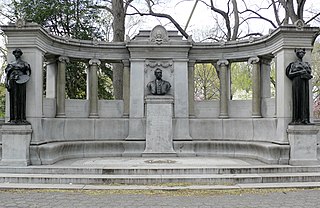
The Richard Morris Hunt Memorial is an exedra of granite and marble, dedicated to the memory of the architect Richard Morris Hunt, designed by Bruce Price with three sculptures by Daniel Chester French, a bust of Hunt, and two flanking statues representing painting and sculpture architecture. The memorial is located at the Central Park perimeter wall, at Fifth Avenue and 70th Street in Manhattan, New York. The bronze sculptures were cast by the Henry-Bonnard Bronze Company of New York.
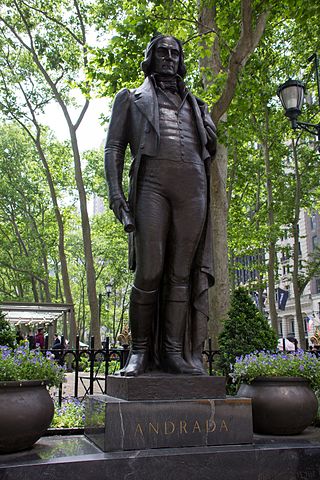
José Bonifácio de Andrada e Silva, also known as the Andrada Monument, is an outdoor bronze sculpture of José Bonifácio de Andrada by José Otavio Correia Lima, located at Bryant Park in Manhattan, New York. It is 9 feet (2.7 m) tall and weights approximately 4,000 lbs. Lima was selected through a competition that was sponsored by the Brazilian government, which also donated $60,000 for the surrounding plaza and granite base.
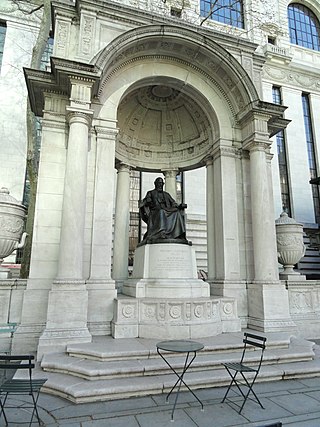
The William Cullen Bryant Memorial is an outdoor sculpture of William Cullen Bryant, located at Bryant Park in Manhattan, New York. The bronze statue was created by Herbert Adams and installed in 1911, the year the New York Public Library Main Branch building was completed.

Ludwig van Beethoven is a series of sculptures of Ludwig van Beethoven by German-American sculptor Henry Baerer. Versions are displayed in Central Park and Prospect Park in New York City, as well as Golden Gate Park in San Francisco. The sculpture in Central Park was dedicated on July 22, 1884. It includes two bronze statues, including a bust of Beethoven and an allegorical female figure on a polished Barre Granite pedestal.

Gertrude Stein is an outdoor bronze sculpture of Gertrude Stein, located at Bryant Park in Manhattan, New York. The casting was installed in 1992 and is based on a model created by Jo Davidson in Paris in 1923. It neighbors the New York Public Library Main Branch, which, according to the New York City Department of Parks and Recreation, commemorates Stein's "significant literary contributions".

An outdoor bronze bust of Giuseppe Mazzini by Giovanni Turini is installed in Central Park's Sheep Meadow, in Manhattan, New York. The sculpture was commissioned by a group of Italian-Americans and was dedicated in 1878 with a speech by American poet William Cullen Bryant. It sits on a granite pedestal, which includes two inscriptions that translate to "thought and action" and "God and the people". In 1994, the bust was restored by the Central Park Conservancy.

Benito Juárez is an outdoor bronze sculpture of Benito Juárez by Moises Cabrera Orozco, located in Bryant Park in Manhattan, New York. Donated by the State of Oaxaca on behalf of the Mexican Government and the Mexican Trade Center, the portrait sculpture was cast in Mexico in 2002 and installed on October 9, 2004. It is the most recent statue in the park, and the first to depict a Mexican.

William Earl Dodge is an outdoor bronze sculpture of William E. Dodge by John Quincy Adams Ward, located at Bryant Park in Manhattan, New York. It was cast in 1885 and dedicated on October 22 of that year.

The Goethe Monument is an outdoor 1880 memorial to German writer and statesman Johann Wolfgang von Goethe by Fritz Schaper, located in Tiergarten in Berlin, Germany. The sculpture's base depicts the allegorical figures of Drama, Lyric Poetry, and Science.
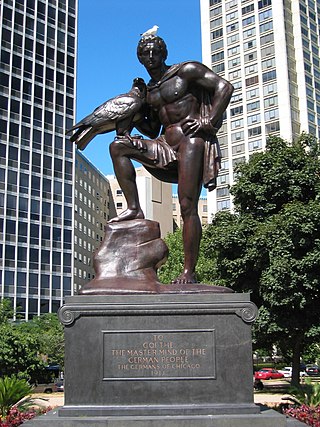
The Goethe Monument is a bronze statue by Herman Hahn in Chicago's Lincoln Park, in the U.S. state of Illinois, unveiled in 1913. It depicts a larger than life, neoclassically styled hero in undress with a draped cape, and peering far into the distance, with a bent leg perched on a rock and a hunting eagle perched on his knee. The allegorical statue is not a portrait sculpture of the German philosopher Johann Wolfgang von Goethe, but rather seeks to embody the "spirit of Goethe"; a low wall behind the statue shows a bas-relief of Goethe and a quote from his play Faust in German and English. The inscription on the statue reads: "To / Goethe / The Master Mind of the / German People / The Germans of Chicago / 1913".




















